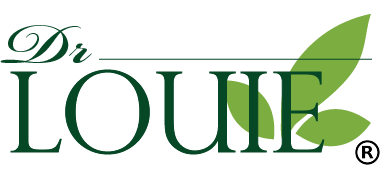
.
The term “clean” as in “clean beauty” is used industry wide to indicate that a product is safe for people and planet. But it isn’t legally regulated like the term “organic.”
So today, we’ll look at what this term means exactly, and how it affects us.
So the term “clean” used in the beauty industry is more of a safety standard, but it has nothing to do with whether the formula is all natural or not. What this means is that the formula can include natural and lab-made ingredients that are safe for people and the planet. But as mentioned before, the term isn’t regulated like the term “organic,” so the definition of “clean product” varies from brand to brand and from company to company.
That’s why we at DrLOUIE have always had strict ingredient standards for our formula and products and has committed to clean certifications like CertClean.
We at DrLOUIE have always believed in and placed utmost important on the skin’s natural ability to heal. And to that end, our goal is to help the skin by using skin-friendly, safe ingredients that BOOST the skin’s natural ability to heal and in delaying the signs of aging without the use of aggressive ingredients. Any ingredients that are considered effective but dangerous for the skin may work to delay signs of aging in a short period of time, but they can compromise the health of our skin in the long run.
So our approach has always been to pioneer a simple solution that can actually deliver results slowly but effectively, without compromising the skin barrier and the health of the skin, and make the skin stronger and healthier in the long run.
From the very beginning, we have set a strict criteria when selecting ingredients:

This criteria sounds vague but is one of the most important ones when we choose ingredients. In our definition, harmful ingredients mean those that can be considered as endocrine disruptors, carcinogens, or cause skin problems, such as skin irritation, clogged pores, etc. Some of these include commonly used SLS/SLES, PEG, silicone-based ingredients, ethanol alcohol-based ingredients, EDTA, colours, paraben, etc. And this not only means not including these ingredients in our products but also not choosing ingredients that are made using these ingredients.

As an anti-aging research lab, for us, data is crucial. No matter how trendy an ingredient is, if it hasn’t been tested and research time and again for its safety and effectiveness, and if the effectiveness of an ingredient hasn’t been rigorously investigated and researched, then we don’t consider it for our products. That’s why you won’t find a “trendy” ingredient that everyone’s talking about in our products.
And when we say “rigorously investigated and researched,” we are talking about how much data is out there to prove the ingredient’s safety and effectiveness. For example, EmblicaTM, one of the ingredients that is used the most in our products, has been patented for its extraction method and for its effectiveness, and has incredible amount of research to back it up.

COMPATIBILITY OF INGREDIENTS
An active ingredient may be strong and effective on its own, but when used with an ingredient that works against it, it could wreak havoc on our skin. (Read our blog on ingredients that should not be mixed and matched.) Some examples of these would be Vitamin C with retinol. On their own, they are excellent anti-aging ingredients. But when used together, they’ll cause skin irritation and redness. So when we choose ingredients, we make sure that active ingredients and non-active ingredients work together to create a synergy for the skin, not work against it.

INGREDIENT SELECTION PROCESS
The three criteria mentioned above are key to choosing ingredients. We first check for the known safety issues with an ingredient the look into its data to see how effective and well-investigated the ingredient is. Once we have narrowed down our selection of ingredients, our Chief Research Scientist check the possible formulas that can be made with those ingredients to see whether they create synergy or work against our skin.
I hope this blog post has clarified some of the questions that were out there about how we select our ingredients and what standards we have and still adhere to when we choose ingredients.
If you have more questions about any of the ingredients or our ingredient selection criteria, please email us at info@drlouie.ca or start a live chat on our website at www.drlouie.ca.
-----
And we have a special blog post event! After you’ve done reading this post, start a live chat to let us know that you’ve finished reading this blog post along with your email address that you used to sign up! We’ll send a special $5 gift card that you can use online!
And stay tuned to next Thursday for an exciting announcement from CertClean!



![[Tips] How to do eye area massage to look younger](http://drlouie.ca/cdn/shop/articles/Blog__Eye_massage_hero_banner.png?v=1657724904&width=1800)
